Why robots can be culturally insensitive—and how scientists are trying to fix it
A robot is chatting to an elderly British man in his bedroom. The robot has a cheery demeanor and a pleasantly high-pitched voice.
Apr 16, 2024
0
8
Robotics

A robot is chatting to an elderly British man in his bedroom. The robot has a cheery demeanor and a pleasantly high-pitched voice.
Apr 16, 2024
0
8
Robotics
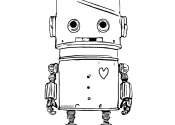
It takes a village to nurture social robots. Researchers who develop social robots—ones that people interact with—focus too much on design features and not enough on sociological factors, like human-to-human interactions, ...
Apr 22, 2024
0
56
Robotics
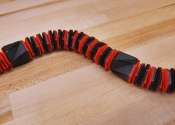
Engineers at Princeton and North Carolina State University have combined ancient paper-folding and modern materials science to create a soft robot that bends and twists through mazes with ease.
May 6, 2024
1
46
Robotics

Researchers at the U.S. Department of Energy's National Renewable Energy Laboratory (NREL) have successfully leveraged robotic assistance in the manufacture of wind turbine blades, allowing for the elimination of difficult ...
May 2, 2024
0
31
Robotics
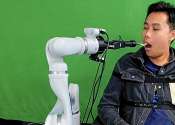
Cornell researchers have developed a robotic feeding system that uses computer vision, machine learning and multimodal sensing to safely feed people with severe mobility limitations, including those with spinal cord injuries, ...
May 9, 2024
0
65
Business

Researcher and technologist Matt Beane, an assistant professor in the Technology Management Department at UC Santa Barbara, is calling attention to an immediate and hidden concern in the modern workplace—and offering a ...
May 1, 2024
0
4
Robotics
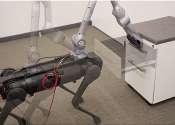
Getting robots to perform even a simple task requires a great deal of behind-the-scenes work. Part of the challenge is planning and executing movements, everything from turning wheels to lifting a robotic arm. To make this ...
May 8, 2024
0
31
Robotics
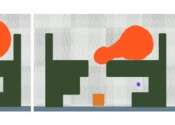
Imagine a slime-like robot that can seamlessly change its shape to squeeze through narrow spaces, which could be deployed inside the human body to remove an unwanted item.
May 9, 2024
0
39
Robot is a virtual or mechanical artificial agent. In practice, it is usually an electro-mechanical system which, by its appearance or movements, conveys a sense that it has intent or agency of its own. The word robot can refer to both physical robots and virtual software agents, but the latter are usually referred to as bots. There is no consensus on which machines qualify as robots, but there is general agreement among experts and the public that robots tend to do some or all of the following: move around, operate a mechanical limb, sense and manipulate their environment, and exhibit intelligent behavior, especially behavior which mimics humans or other animals. In South Africa, robot is an informal and commonly used term for a set of traffic lights.
Stories of artificial helpers and companions and attempts to create them have a long history but fully autonomous machines only appeared in the 20th century. The first digitally operated and programmable robot, the Unimate, was installed in 1961 to lift hot pieces of metal from a die casting machine and stack them. Today, commercial and industrial robots are in widespread use performing jobs more cheaply or with greater accuracy and reliability than humans. They are also employed for jobs which are too dirty, dangerous or dull to be suitable for humans. Robots are widely used in manufacturing, assembly and packing, transport, earth and space exploration, surgery, weaponry, laboratory research, and mass production of consumer and industrial goods.
Modern robots are usually used in tightly controlled environments such as on assembly lines because they have difficulty responding to unexpected interference. Because of this, most humans rarely encounter robots. However, domestic robots for cleaning and maintenance are increasingly common in and around homes in developed countries, particularly in Japan. Robots can also be found in the military.
This text uses material from Wikipedia, licensed under CC BY-SA